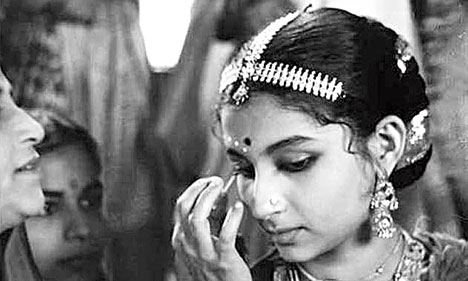
Chandan has been applied on the forehead in this part of the world from long back. The myths and Puranas refer to tilaks worn on foreheads, of ash, kumkum or chandan (sandalwood) paste. The tilak, a mark on the forehead, would be symbolical of the third eye.
But chandan was not only auspicious; it was fragrant, excellent for the skin and looked beautiful. It took on a different aesthetic altogether. Women, men — and gods too — began to decorate their foreheads with chandan designs. In Geeta Govindam, Jayadeva mentions Lord Krishna’s forehead as “chandan charchita”: adorned with chandan.
Through the ages, the chandan designs became an essential part of weddings. In Bengali weddings, in particular, applying the chandan became an art. Not only the bride, but also the groom wore chandan. For the bride, patterns became elaborate; cheeks and the chin, not to mention eyelids, could be covered with chandan designs. Sindoor or kumkum would be used along with chandan for the bride.
Now, paint and small stones or glitter are also used to decorate the bride’s forehead, often to match the clothes she is wearing. But who can forget the beautiful simplicity of the simple dots that Sharmila Thakur as Aparna (picture above) wore in Satyajit Ray’s Apur Sansar?










